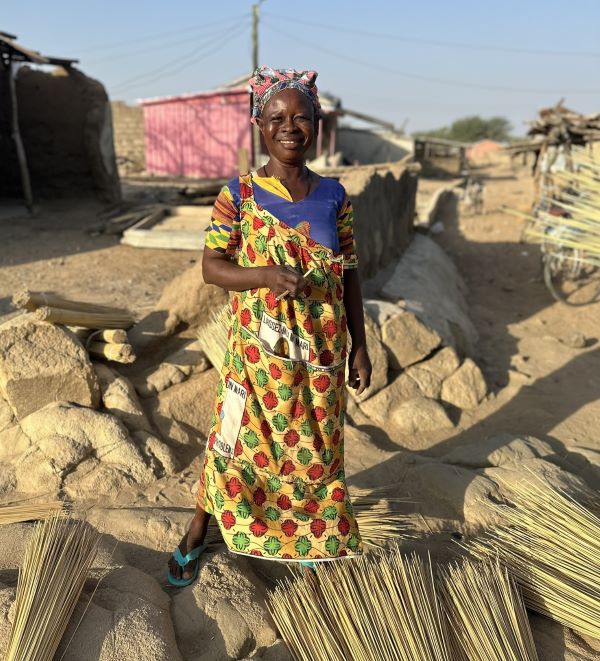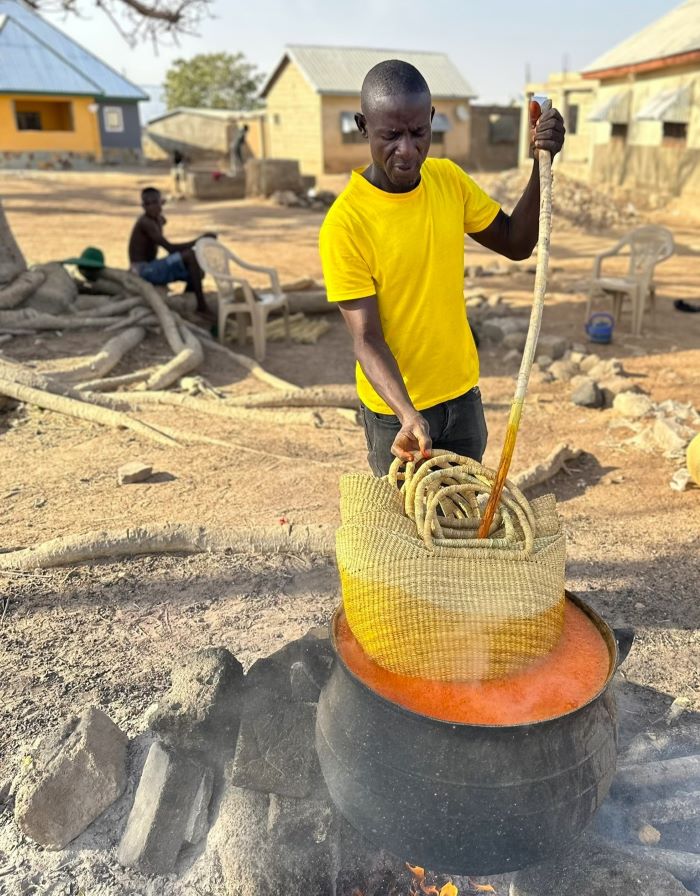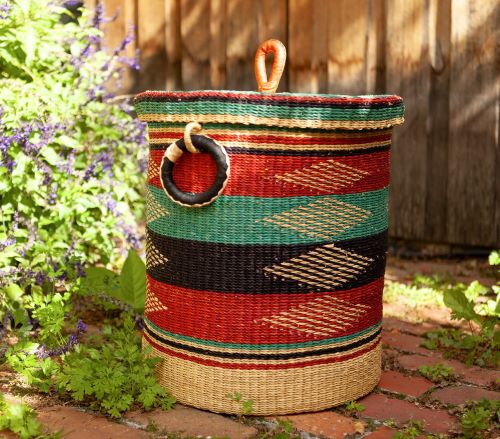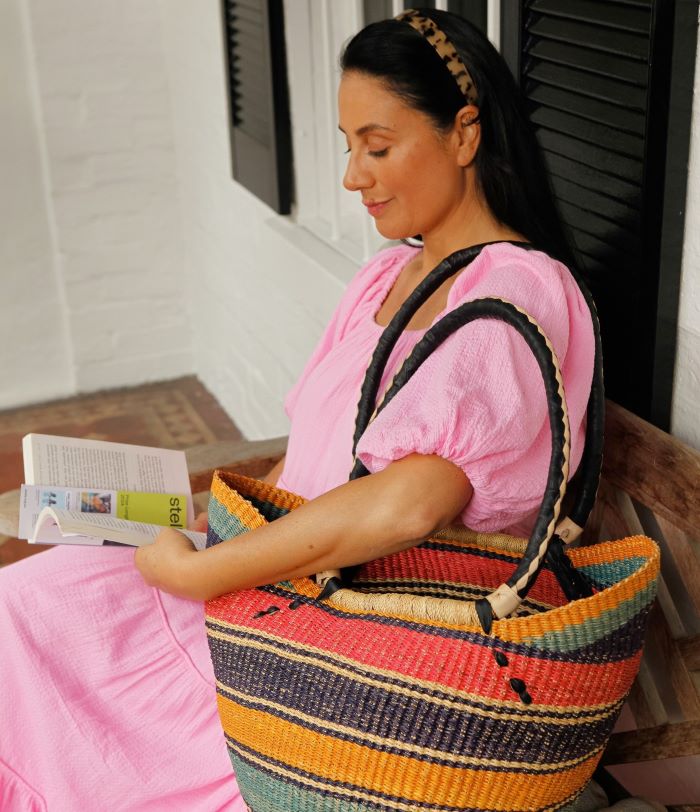THE ART OF AFRICAN BASKET WEAVING: A DEEP DIVE
tHE ART OF AFRICAN BASKET WEAVING
Understanding Bolga Baskets
The creation of Bolga baskets is deeply rooted in tradition. Artisans begin by harvesting elephant grass during the dry season, ensuring they choose only the best quality fibers. Once harvested, they dry the grass and prepare it for weaving. This meticulous process showcases the artisans’ dedication to their craft.
Techniques in Bolga Basket Weaving
Now, let’s delve into the specific techniques involved in the art of African basket weaving. Each step of the process plays a crucial role in creating the final product.

1. gathering materials
Before weaving begins, artisans collect the necessary materials. As mentioned earlier, elephant grass is the primary fiber used. Furthermore, they often incorporate other materials like leather, to enhance the basket’s aesthetic. The careful selection of these materials is essential, as it impacts the basket’s durability and overall appearance.
2. Preparing the Grass
Once the materials are gathered, the next step is to prepare the grass. Artisans cut the elephant grass into manageable lengths and soak it in water. This soaking process softens the fibers, making them more pliable for weaving. By taking the time to prepare the grass properly, artisans ensure that the baskets maintain their shape and strength.
Once the grass is collected, artisans meticulously prepare it for weaving. This involves several steps:
Sorting: After soaking, the grass is sorted by thickness and colour. Thinner strands are often used for finer details, while thicker strands provide strength to the overall structure.
Cutting: The grass is cut into manageable lengths, usually around two to three feet. This makes it easier to handle during the weaving process.
Soaking: After cutting, artisans soak the grass in water for several hours. This softens the fibers, making them more pliable and less prone to breaking during weaving. This technique also allows the grass to regain its natural colour and sheen.
3. The Weaving Process
The weaving technique itself is where the artistry truly shines. Artisans typically use a technique called coiling. This method involves spiraling the grass around itself to create a sturdy structure. As they weave, they skillfully interlace the grass to form patterns and designs. Each artisan brings their unique style to this process, resulting in one-of-a-kind pieces.
Starting the Coil: The artisan begins by creating a small base. They twist and coil the grass around itself, securing the strands tightly to form a stable foundation.
Building Up: As the basket takes shape, the artisan continues to add coils, weaving them together. This process requires a careful balance of tension; too tight, and the basket can lose shape; too loose, and it can become flimsy.
Interlacing: To create patterns, artisans often interlace different colours of grass. This can involve simple geometric designs or more intricate patterns that reflect cultural symbols and stories.
Finishing Touches: Once the desired height is reached, artisans finish the basket by weaving the last few rows tightly to secure the structure. They may also trim any excess grass to create a neat edge.
Moreover, artisans often use a variety of techniques to create different textures and designs. For example, some may create intricate geometric patterns, while others may prefer more organic shapes. This diversity not only reflects the artisan’s personal style but also tells a story about their community.
4. Colour Application
After the Bolga basket is woven, artisans apply colour to enhance its unique look and visual appeal. They use natural dyes derived from plants and roots, a method that has been passed down through generations.

For instance, indigo and hibiscus are commonly used to achieve rich blues and reds. This commitment to using natural materials is part of what makes Bolga baskets so special.
Here’s how artisans achieve the vibrant hues:
Natural Dyes: Artisans use natural dyes made from local plants and roots, ensuring that their baskets maintain an eco-friendly profile. Common sources include indigo for blue shades and hibiscus for reds.
Dyeing Process: The grass is dyed before weaving begins, allowing the colours to infuse deeply into the fibers. This step requires delicate timing, as artisans must monitor the dyeing process to achieve the desired intensity.
Colour Patterns: The application of color often reflects the artisan’s community and personal style. Some may opt for bold, contrasting colours, while others might favor subtle, earthy tones.
5. DECORATIVE ELEMENTS
Many artisans enhance their Bolga baskets by adding decorative elements:
Personal Touches: Each artisan often incorporates personal symbols or motifs that tell a story or represent their heritage. This adds a unique layer of meaning to every basket.
Leather Straps: Some baskets feature leather accents or handles, which not only improve functionality but also contribute to the aesthetic appeal, like on the Laundry basket pictured below.

There is Beauty in Craft and Tradtion:
In conclusion, the Bolga basket weaving techniques showcase the rich cultural heritage of Ghana.
From gathering materials to weaving and colouring, each step is steeped in African tradition and generational artistry.
The techniques have been passed down through generations, preserving a craft that is both beautiful and functional.
By supporting these artisans, you are contributing to the sustainability of this remarkable art form.
When you think about adding a touch of culture to your home, consider investing in a Bolga basket. Not only will you enjoy a unique piece of art, but you will also be honoring the rich traditions of Ghanaian artisans.

